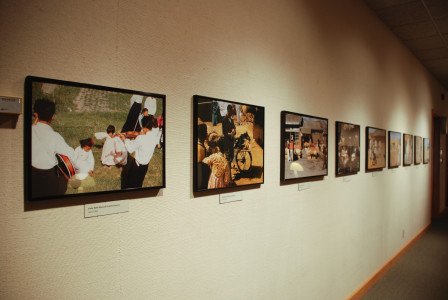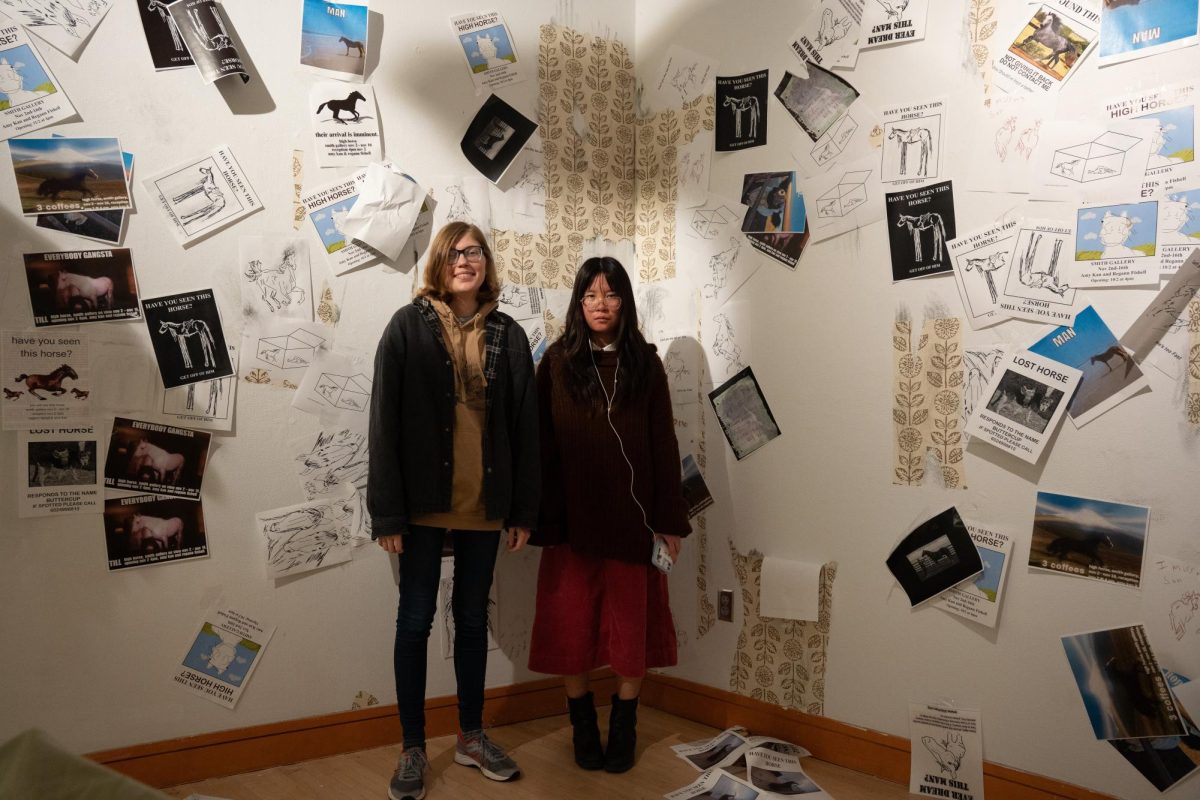
When Cliff Strovers was drafted into the army and sent to serve in the Korean War in January of 1953, he did not even know where Korea was, much less anything about what Korean life looked like. Having only ever lived within ten miles of Grinnell, Strovers took the opportunity to photograph his surroundings. Today, Strovers still lives in town and an exhibition of his photography is on display in Burling basement.
“There were a lot of pictures of the war but not much pictures of the day-to-day,” Strovers said.
Strovers did not speak any Korean and the locals he encountered did not speak any English, so he depended entirely on the cooperation of the locals letting him shoot pictures of Korean architecture and street life.
“I didn’t know a darn thing about photography, but somebody told me a little bit about it,” Strovers said. “You set the speed and the focus, but you have to have film in it of course … it was a learning experience all the way.”
Strovers depended on other Americans to teach him about photography and get a light meter, which helped him determine what settings to use on his film camera. Back then, film canisters cost three or four dollars and Strovers had to send the film to Hawaii to get it developed because Korea did not have film processing facilities.
Though most other soldiers with cameras photographed war shots and military equipment, Strovers focused on day-to-day shots.
“Being from a rural area, I liked the rural scenes [in Korea] that were very different from what it was back home,” Strovers said. “I wanted to show my family back home what it was like in Korea … I sent the slides home to my wife so she knew what she was looking at.”
Since his time shooting pictures in the 1950s, Strovers returned to Korea in 2010 as part of an anniversary trip for Korean War veterans. Strovers went with his grandson and photographed some of the same landmarks he shot the last time he was there in 1953.
“It was truly unbelievable because it was such a dramatic change,” Strovers said. “I think one thing about it is that everything was just about wiped out, so they could start from scratch. There are very few buildings in Pusan that were there when I was there originally.”
At his talk in the Burling lobby on Thursday, Strovers showed side-by-side comparisons of the photos he took on his trips, including shots of a beach the first summer after the Korean War ended next to a shot of the same beach today lined with high rise skyscrapers.
During his trip to Korea, Strovers gave his photographs to a publisher, who assembled a book of 300 of the 400 photos Strovers took. His photos are also part of a traveling exhibit that will soon be featured nearby in Kellogg, Iowa.



















































